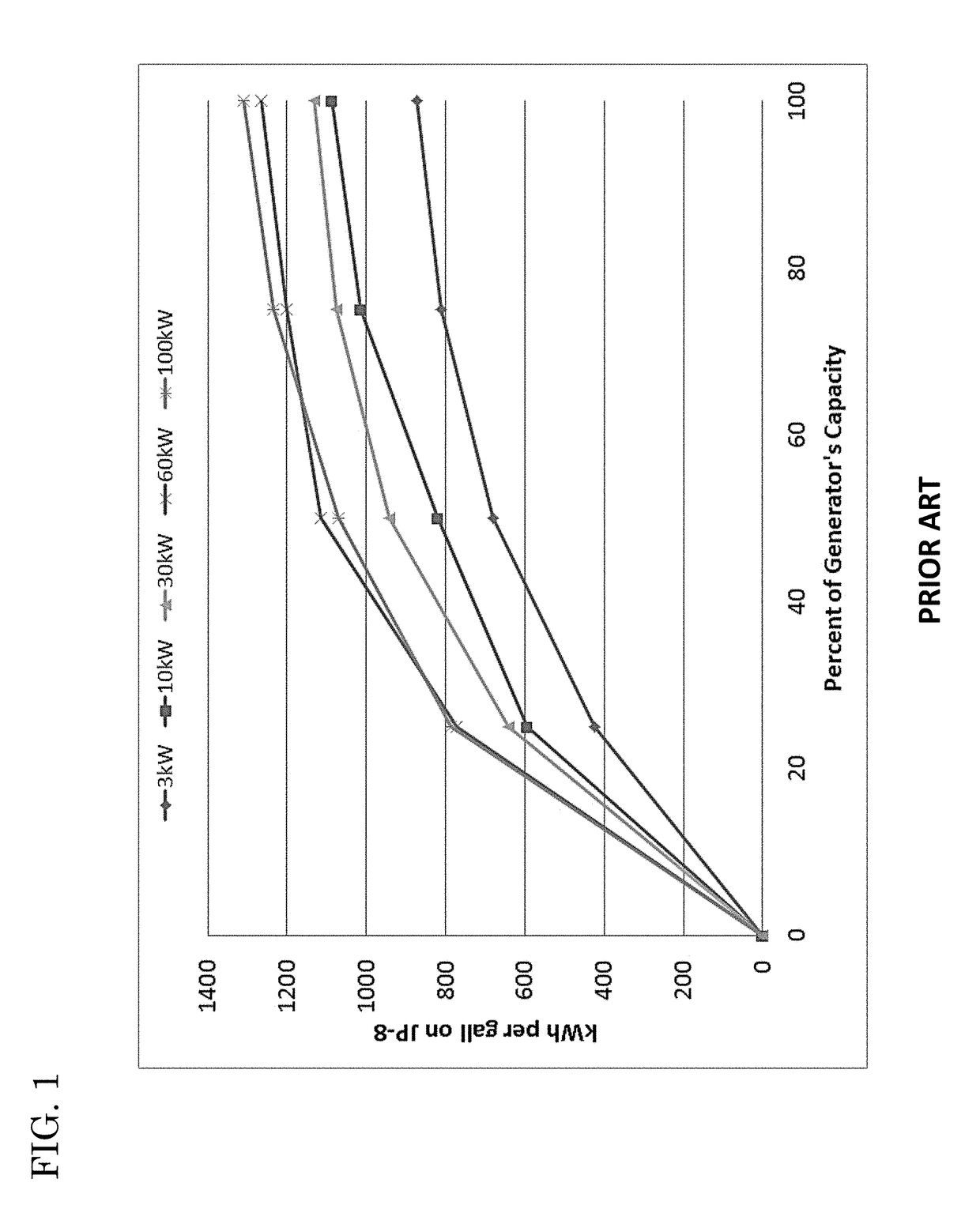Self-optimizing hybrid power system
a hybrid power system and self-optimization technology, applied in adaptive control, computer control, instruments, etc., can solve the problems of low system performance, large diurnal and seasonal power fluctuation, and low efficiency of logistics fuel consumption, so as to improve system performan
- Summary
- Abstract
- Description
- Claims
- Application Information
AI Technical Summary
Benefits of technology
Problems solved by technology
Method used
Image
Examples
Embodiment Construction
[0042]Reference is now made to FIG. 3, which shows the performance of modeled hybrid power systems using various amounts of renewable energy, in comparison to a standard program-of-record generator. The problem of inconsistent and inefficient utilization of renewable energy is illustrated by the hybrid system modeled with a 3200 W photovoltaic array. When compared to an optimized system with half as much renewable energy, the system with 3200 W of renewables is less efficient at lower loads due to its inability to harvest renewable energy whenever it's available. This is primarily due to the inability of the system to dictate when resources are available and allow sufficient energy storage to accept available renewable sources.
[0043]FIG. 4 illustrates a power source dominance issue, typical of current hybrid power technologies. This problem allows a generator to be the dominate power source when running, causing the “free” renewable resource to be poorly utilized.
[0044]Studies on th...
PUM
 Login to View More
Login to View More Abstract
Description
Claims
Application Information
 Login to View More
Login to View More - R&D
- Intellectual Property
- Life Sciences
- Materials
- Tech Scout
- Unparalleled Data Quality
- Higher Quality Content
- 60% Fewer Hallucinations
Browse by: Latest US Patents, China's latest patents, Technical Efficacy Thesaurus, Application Domain, Technology Topic, Popular Technical Reports.
© 2025 PatSnap. All rights reserved.Legal|Privacy policy|Modern Slavery Act Transparency Statement|Sitemap|About US| Contact US: help@patsnap.com



